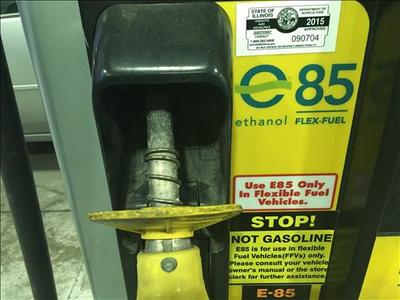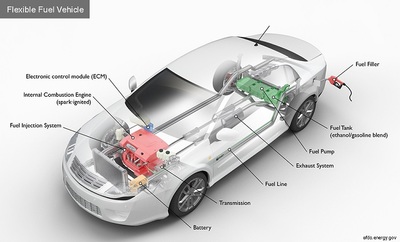How Do Flexible Fuel Cars Work Using Ethanol?
Flexible fuel vehicles (FFVs) have an internal combustion engine and are capable of operating on gasoline and any blend of gasoline and ethanol up to 83%. FFVs have one fueling system, and most components are the same as those found in a conventional gasoline car. Some special ethanol-compatible components are required to compensate for the different chemical properties and energy content in ethanol, such as modifications to the fuel pump and fuel injection system. The engine control module (ECM) is also calibrated to accommodate the higher oxygen content of ethanol. Learn more about flex fuel vehicles.
Key Components of a Flex Fuel Car
Battery: The battery provides electricity to start the engine and power vehicle electronics/accessories.
Electronic control module (ECM): The ECM controls the fuel mixture, ignition timing, and emissions control; monitors the operation of the vehicle; safeguards the engine from abuse; and detects and troubleshoots problems.
Exhaust system: Channels the exhaust gases from the engine out through the tailpipe.
Fuel filler: A filler or "nozzle" used to add fuel to the tank.
Fuel injection system: This system inserts fuel into the engine's combustion chambers for ignition.
Fuel line: A metal tube or flexible hose (or a combination of these) allows for transferring fuel from the tank to the engine's fuel injection system.
Fuel pump: A pump that transfers fuel from the tank to the engine's fuel injection system via the fuel line.
Fuel tank (ethanol/gasoline blend): Stores fuel on board the vehicle to power the engine.
Internal combustion engine (spark-ignited): In this configuration, fuel is injected into either the intake manifold or the combustion chamber, where it is combined with air, and the air/fuel mix is ignited by the spark from a spark plug.
Transmission: The transmission transfers mechanical power from the engine and/or electric traction motor to drive the wheels.




